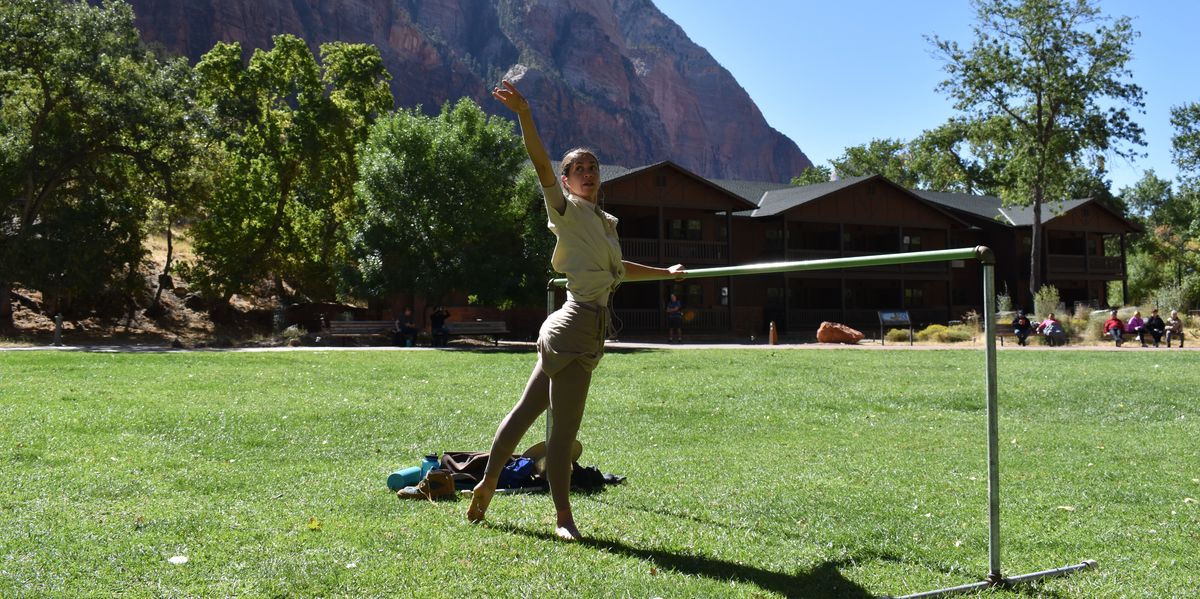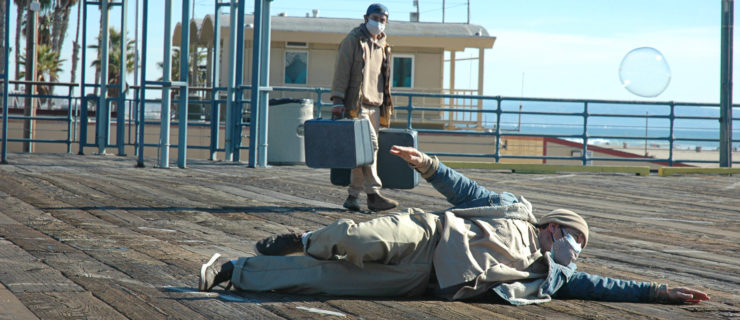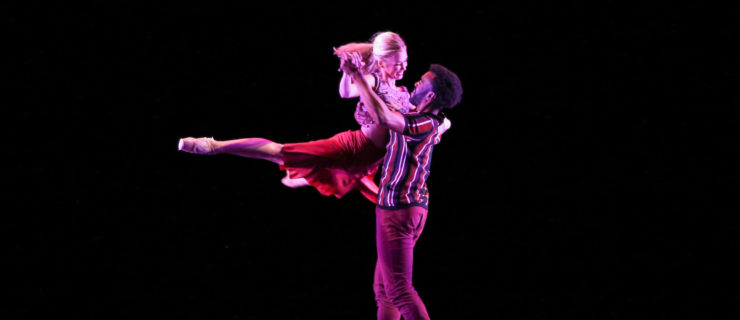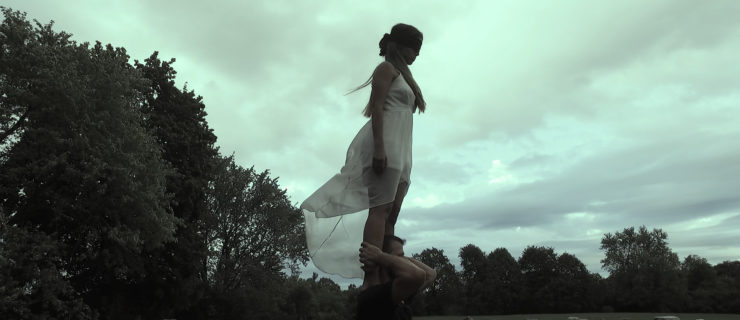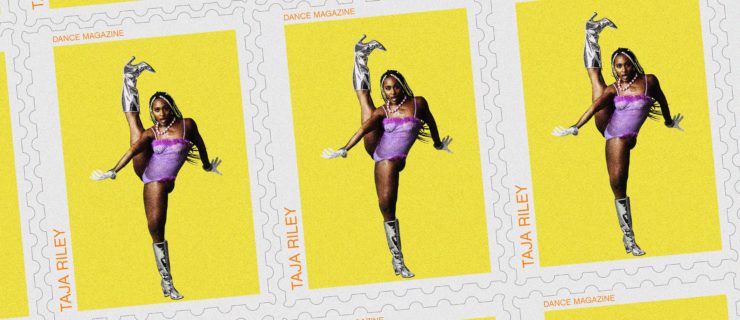This Dancer Spent a Month in Zion National Park as an Artist in Residence
For ballet dancers, taking daily class is one of the most natural things they can do.
But taking class in nature is an entirely different story.
Last September, outdoor barre became the new normal for Sarah Longoria during her monthlong stint at Utah’s Zion National Park. She lived onsite as an artist in residence, the park’s first-ever dancer to be selected for the position. We caught up with Longoria about her time dancing in the shadows of the canyon.

Courtesy Longoria
The director of the Salt Lake City–based Municipal Ballet Co., Longoria heard about Zion’s residency program several years before she decided to apply. She was originally unsure if they’d be open to hosting a dancer, but she was a lover of the Utah desert and several works she’d choreographed for her company had been inspired by nature—including Wilder, which featured performances in the mountains and near a river.
Longoria was one of 104 artists from various disciplines to apply for a 2019 residency. Only four were chosen.
As an artist in residence, she lived alone at a cabin that dates back to 1925. “Since I’m a mom and a wife, I’m not alone very often,” says Longoria. At first, she was homesick, but “eventually I got to like having this alone time. In the morning, I would grind the beans, make my coffee. Do it all nice and slow and open the windows, taking my time because I only had myself to get ready.” After donning her volunteer uniform of khaki shorts and a button-up shirt, she’d head to the nearby Zion National Park Lodge.

Jenna Pullen/Flint and Feather Photography, Courtesy Longoria
Longoria was free to explore her art however she wished, but she had to spend 20 hours a week interacting with the public. Whereas visual artists could easily host an open studio, allowing visitors to browse their paintings, Longoria chose to create her own open studio of sorts: Each day, she retrieved her portable barre from the lodge, set it up near a cottonwood tree on the expansive front lawn and gave herself class outdoors.
“A lot of people would stop and talk to me or ask what I was doing,” she says. Some asked, “Are you doing yoga?” Others told her about their grandchildren who dance, or reminisced about taking ballet themselves when they were younger.
Despite the varied reactions, it was an opportunity to dialogue about the arts. “I tried to not worry about getting through class at a certain pace,” says Longoria. One element was particularly illuminating: Longoria found herself explaining what a ballet barre was and how it was used for daily exercises. “I didn’t think a ton about that before: Most people don’t see ballet class, actually.” Whereas they might see a ballet performance, she explain, class might be totally foreign.

Courtesy Longoria
Longoria admits that, at first, taking barre in such an open environment was a bit uncomfortable. “Class is where we’re working on ourselves, so I had to remind myself that I’m a work in progress always and that this is just me practicing my art, and it’s okay to do it in front of people.” Presenting dance outside of a theater in a different context yielded some unexpected feedback from visitors. “People told me that they felt like they could see the shapes of what I was doing in the landscape, which was cool, because I was just doing a normal barre.”
In the afternoons, Longoria would often hike the trails in uniform. “I got to learn a lot about Zion because people would ask me questions,” she says. Aside from typical chores like laundry and cooking, Longoria filled the rest of her time with letter writing (as a way to keep in touch with family and friends without cell service), journaling about the experience and sewing a prototype of a costume for an upcoming ballet.
In exchange for the residency, all artists have to donate a work of art to the park. Longoria chose to choreograph an evening-length ballet, set to premiere in 2020 both in Salt Lake City and in or near Zion National Park. She’s collaborating with four local music groups on the projects and says, “I probably will send them excerpts from my journals, so they can see what it was like for me there.”
While Longoria was lucky to spend a month at a national park, she believes that all dancers can benefit from time outside of the studio. “The connection with nature is really important for humans, in general. I think that in our day-to-day lives we are pretty disconnected from our land because we have a lot of comforts—we have houses with air conditioning and heating and we drive from place to place and we are looking at our screens a lot. I think it’s really important for us to remember that we, too, are also natural. We’re a part of this earth.”

Jenna Pullen/Flint and Feather Photography, Courtesy Longoria
“I feel like during my formative years,” she says, “without realizing it, I was trying to be some other dancer or the picture of a dancer or thinking I needed to be a certain way. But I think that the art, and maybe also the technique, loses something when the artist isn’t fully himself or herself. Being in nature, you realize that you are part of nature. Nature, it’s not trying to be anything else. Realizing that can really help a dancer understand that being themself is the truest they can be.”
Longoria believes that authenticity translates to audiences, too. “I think audiences can be impressed with feats of technique and precision, but it isn’t going to bring meaning to their lives unless there’s humanity and generosity behind it. Nature doesn’t care what people think about it—it just is, and it’s beautiful. That’s what we human dancers can learn from it.”
